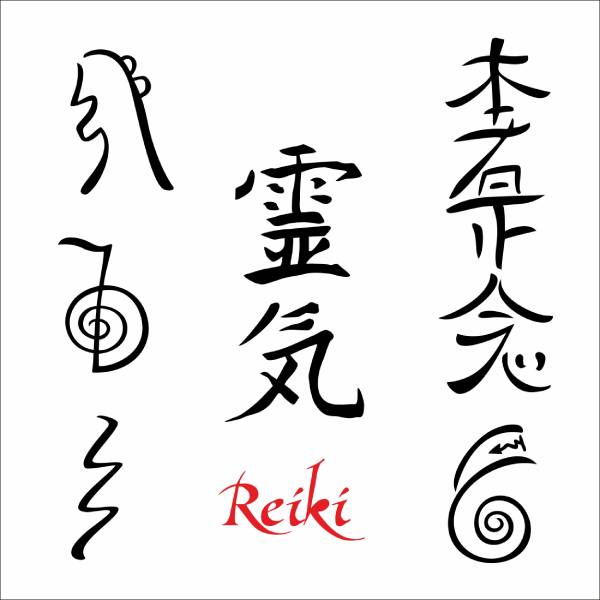Reiki, a Japanese technique for stress reduction and relaxation that also promotes healing, relies on symbols to channel energy. These symbols hold profound significance in the practice, each representing a unique aspect of healing energy. This comprehensive guide explores the world of Reiki symbols, exploring their effectiveness, significance, and application.
Contents
- 1 Do Reiki Symbols Work?
- 2 Understanding the Power of Healing Symbols
- 3 What is the Powerful Healing Symbol?
- 4 Exploring Symbols in Reiki Level 2
- 5 Activating Reiki Symbols: Unleashing Their Potential
- 6 Assessing the Effectiveness of Reiki
- 7 Symbols for Healers: Tools of Empowerment
- 8 Can Reiki Symbols Be Used Without Attunement?
- 9 Harnessing the Healing Power of Color
- 10 Exploring the Oldest Symbol of Healing
- 11 The Spiritual Essence of Healing Colors
- 12 Unveiling the Colors of God
- 13 The Attainment of Reiki Mastery
- 14 The Essence of Reiki Energy
- 15 Exploring the Three Reiki Symbols
- 16 FAQs
- 16.1 Can anyone use Reiki symbols, or do you need special training?
- 16.2 What is the significance of color in Reiki healing?
- 16.3 Is Reiki suitable for everyone, regardless of religious or spiritual beliefs?
- 16.4 How can I tell if Reiki is working for me?
- 16.5 Can Reiki be a complementary therapy alongside conventional medical treatment?
- 17 Conclusion
Do Reiki Symbols Work?
Reiki symbols are believed to be potent tools for accessing and channeling healing energy. While their efficacy may vary from person to person, many practitioners attest to experiencing profound effects when using these symbols during Reiki sessions. The power of Reiki symbols lies in their ability to act as focal points for intention and energy flow, allowing practitioners to tap into the universal life force energy and direct it toward healing and balance.
Understanding the Power of Healing Symbols
At the core of Reiki lies the belief in the transformative power of symbols. Each symbol carries its vibration and intention, allowing practitioners to tap into specific aspects of healing energy. Through focused intention and practice, these symbols can facilitate deep healing on physical, emotional, and spiritual levels.
The significance of Reiki symbols goes beyond their physical representation; they serve as gateways to the unlimited potential of the universe, connecting practitioners to the source of all creation.
What is the Powerful Healing Symbol?
One of the most revered symbols in Reiki is the Cho Ku Rei, often referred to as the “power symbol.” This symbol is believed to amplify the flow of Reiki energy, enhance protection, and promote healing on all levels.
The Cho Ku Rei symbol catalyzes energy activation, allowing practitioners to access and channel higher healing energy frequencies. Its versatility makes it an indispensable tool in the Reiki practitioner’s toolkit, capable of addressing various physical, emotional, and spiritual imbalances.
Exploring Symbols in Reiki Level 2
In Reiki Level 2, practitioners are introduced to additional symbols such as Sei He Ki and Hon Sha Ze Sho Nen. These symbols expand the practitioner’s ability to work with specific healing aspects, including emotional healing, distance healing, and connection across time and space. Each symbol in Reiki Level 2 represents a unique facet of the healing journey, offering practitioners new avenues for exploration and growth.
Through diligent practice and attunement, practitioners can deepen their understanding of these symbols and harness their full potential for healing and transformation.
Activating Reiki Symbols: Unleashing Their Potential
Activating Reiki symbols involves a combination of intention, visualization, and sacred practice. By drawing or visualizing the symbols and invoking their names, practitioners establish a connection with the universal life force energy, allowing it to flow freely through them and into the recipient.
Activating Reiki symbols is not merely mechanical; it requires a deep reverence and respect for the healing energy they represent. Through mindful practice and attunement, practitioners can attune themselves to the subtle nuances of each symbol and harness their transformative power with precision and grace.
Assessing the Effectiveness of Reiki
Whether Reiki works involves tuning into subtle shifts in energy, sensations, and overall well-being. As practitioners become attuned to the flow of Reiki energy, they can discern its effects through tangible experiences such as relaxation, pain relief, emotional release, and spiritual insights.
The effectiveness of Reiki is not solely dependent on external validation but also on the practitioner’s ability to attune to their inner guidance and intuition. By cultivating a deep sense of presence and mindfulness, practitioners can navigate the intricacies of the healing process and facilitate profound transformations in themselves and others.
Symbols for Healers: Tools of Empowerment
For healers, Reiki symbols serve as powerful allies in their healing journey. These symbols enhance the efficacy of their healing sessions and deepen their connection to the healing energy and the recipients. Drawing or visualizing Reiki symbols activates a sacred space within the healer, aligning them with the divine source of all healing.
Through the symbols, healers can channel higher healing energy frequencies and facilitate profound transformations in their clients. Reiki symbols are not limited to physical healing; they can also be used to address emotional wounds, release energetic blockages, and promote spiritual growth and awakening.
Can Reiki Symbols Be Used Without Attunement?
While some individuals may attempt to use Reiki symbols without proper attunement, their effectiveness may be limited. Attunement, facilitated by a Reiki Master, is essential for establishing a clear connection with the symbols and accessing their full potential.
Attunement involves a sacred ritual in which the practitioner’s energy field is aligned with the frequency of the Reiki symbols, allowing them to resonate with the universal life force energy. With attunement, practitioners may be able to connect with the symbols on a deeper level. They may experience a partial range of benefits associated with Reiki practice.
Harnessing the Healing Power of Color
In addition to symbols, color plays a significant role in Reiki healing. Certain colors are associated with specific healing properties, with shades of blue, green, and violet often regarded as healing and soothing.
The use of color in Reiki healing is based on the principle that different colors emit distinct vibrations and frequencies, which can profoundly affect the body, mind, and spirit. By incorporating color into their Reiki practice, practitioners can enhance healing and promote balance and harmony within the individual’s energy field.
Exploring the Oldest Symbol of Healing
Throughout history, various cultures have revered certain symbols for their healing properties. One of the oldest healing symbols is the Caduceus, a staff adorned with two entwined serpents, symbolizing balance, harmony, and healing.
Healers and physicians have used the Caduceus for centuries as a symbol of healing and transformation. Its origins trace back to ancient Mesopotamia, where it was associated with the god Ningishzida, who was revered as a healer and protector.
The Spiritual Essence of Healing Colors
Healing colors are not only visually appealing but also hold profound spiritual significance. White, gold, and purple colors are often associated with spiritual healing, purification, and divine connection.
The use of color in healing rituals dates back thousands of years, with ancient civilizations harnessing the power of color to promote physical, emotional, and spiritual well-being. In Reiki healing, colors activate specific energy centers within the body, known as chakras, and facilitate the flow of healing energy throughout the energy field.
Unveiling the Colors of God
In spiritual traditions, the concept of God is often represented through colors. While interpretations may vary, three colors commonly associated with God are white, gold, and blue, symbolizing purity, enlightenment, and divine protection.
These colors are often depicted in religious artwork and symbolism as a reminder of the divine presence permeating all creation. In Reiki healing, practitioners may invoke these colors to deepen their connection to the divine source of healing energy and to facilitate spiritual growth and awakening in themselves and others.
The Attainment of Reiki Mastery
As practitioners progress in their Reiki journey, they may seek to attain the highest level of mastery, known as Reiki Master Teacher. At this level, individuals understand Reiki principles, symbols, and techniques, empowering them to teach and attune others to the healing energy. Becoming a Reiki Master Teacher is not merely a matter of acquiring knowledge and skills but a profound spiritual journey of self-discovery and transformation. Reiki Masters are entrusted with the sacred responsibility of passing on the lineage of Reiki and guiding others on their path to healing and enlightenment.
The Essence of Reiki Energy
Reiki energy, often called “universal life force energy,” is the vital force that permeates all living beings and sustains life. Through the practice of Reiki, individuals learn to harness and channel this energy for healing, balance, and spiritual growth. The essence of Reiki energy is unconditional love and compassion, which flows through the practitioner and into the recipient, promoting healing on all levels of being. By aligning with the flow of Reiki energy, practitioners can become powerful conduits for divine healing and transformation, facilitating profound shifts in consciousness and awakening.
Exploring the Three Reiki Symbols
The three primary Reiki symbols—Cho Ku Rei, Sei He Ki, and Hon Sha Ze Sho Nen—serve as gateways to different aspects of healing energy. Each symbol carries its unique vibration and purpose, offering practitioners a versatile toolkit for addressing various issues and challenges. Cho Ku Rei, the power symbol, amplifies the flow of Reiki energy and enhances protection.
Sei He Ki, the emotional healing symbol, facilitates the release of emotional blockages and promotes inner harmony. Hon Sha Ze Sho Nen, the distance healing symbol, enables practitioners to send healing energy across time and space, transcending physical limitations and facilitating remote healing sessions.
FAQs
Reiki symbols are traditionally taught and passed down through attunement by a Reiki Master. While some may attempt to use them without training, proper instruction and attunement are essential for unlocking their full potential. Attunement aligns the practitioner’s energy field with the frequency of the symbols, allowing them to resonate with the universal life force energy.
Colors have long been associated with specific healing properties and spiritual significance. In Reiki, different colors enhance healing and promote balance and harmony within the body and mind. Each color emits distinct vibrations and frequencies, which can affect the individual’s energy field and facilitate physical, emotional, and spiritual healing.
Yes, Reiki is a non-denominational practice that can be embraced by individuals of all faiths or those with no religious affiliation. It operates on the universal life force energy principle, which transcends cultural or religious boundaries. Reiki practitioners are encouraged to cultivate an open-minded and inclusive approach to healing, honoring all individuals’ diverse beliefs and experiences.
Pay attention to subtle shifts in your physical, emotional, and spiritual well-being after a Reiki session. These may include feelings of relaxation, increased energy, emotional release, or clarity of mind. Trust your intuition and inner guidance, as they can provide valuable insights into the effectiveness of the healing process.
Many individuals use Reiki as a complementary therapy to support their overall health and well-being. However, you must consult your healthcare provider and inform them of any alternative therapies you’re considering. Reiki should not be used as a substitute for professional medical treatment but can be a valuable addition to holistic wellness practices.
Conclusion
Reiki symbols hold immense power and significance in the practice of Reiki healing. From amplifying energy flow to facilitating deep healing and spiritual growth, these symbols serve as potent tools for practitioners seeking to harness the transformative power of universal life force energy.
By cultivating a deep reverence for the symbols and their sacred significance, practitioners can unlock new levels of healing and awakening in themselves and others, ushering in a new era of holistic wellness and spiritual evolution.
Experience the amazing effects of Reiki healing with Yrma Wilson. Book a session now to start feeling better and living a more balanced life. Let Yrma help you feel your best. Start your journey to wellness today!


